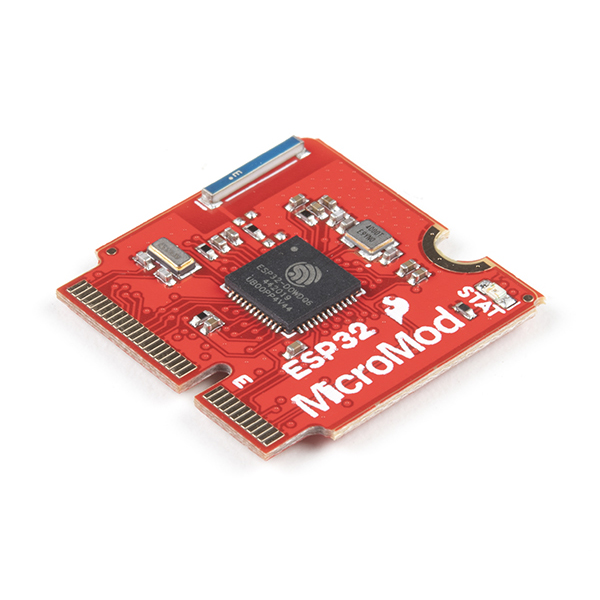SparkFun MicroMod ESP32 Processor Board (16781)
The MicroMod ESP32 Processor Board combines Espressif's ESP32 with our M.2 connector interface to bring a power-packed processor board into our MicroMod ecosystem.
The ESP32 includes a laundry list of functionality, including the dual-core Tensilica LX6 microprocessor, 240MHz clock frequency, 520kB internal SRAM, integrated WiFi transceiver, and hardware accelerated encryption (AES, SHA2, ECC, RSA-4096). With this MicroMod processor board, you have access to 8 general use IO pins, dedicated analog, digital, and PWM pins, as well as all the fan favorites - SPI, I2C, UART, and SDIO. Add to that 16MB flash storage and sleep current of around 500µA, and you've got a perfect storm of versatility.
Grab yourself a SparkFun MicroMod ESP32 Processor Board and a compatible carrier board and get to hacking!
- /Documentation - Data sheets, additional product information
- /Hardware - Eagle design files (.brd, .sch)
- /Production - Production panel files (.brd)
- Hookup Guide - Basic hookup guide for the SparkFun MicroMod ESP32 Processor Board.
- Getting Started with MicroMod - A tutorial to help you get started with the MicroMod Ecosystem.
- Designing with MicroMod - A tutorial to walk you through the specs of the MicroMod processor and carrier board as well as the basics of incorporating the MicroMod form factor into your own PCB designs.
This product is open source!
Please review the LICENSE.md file for license information.
If you have any questions or concerns on licensing, please contact technical support on our SparkFun forums.
Distributed as-is; no warranty is given.
- Your friends at SparkFun.




